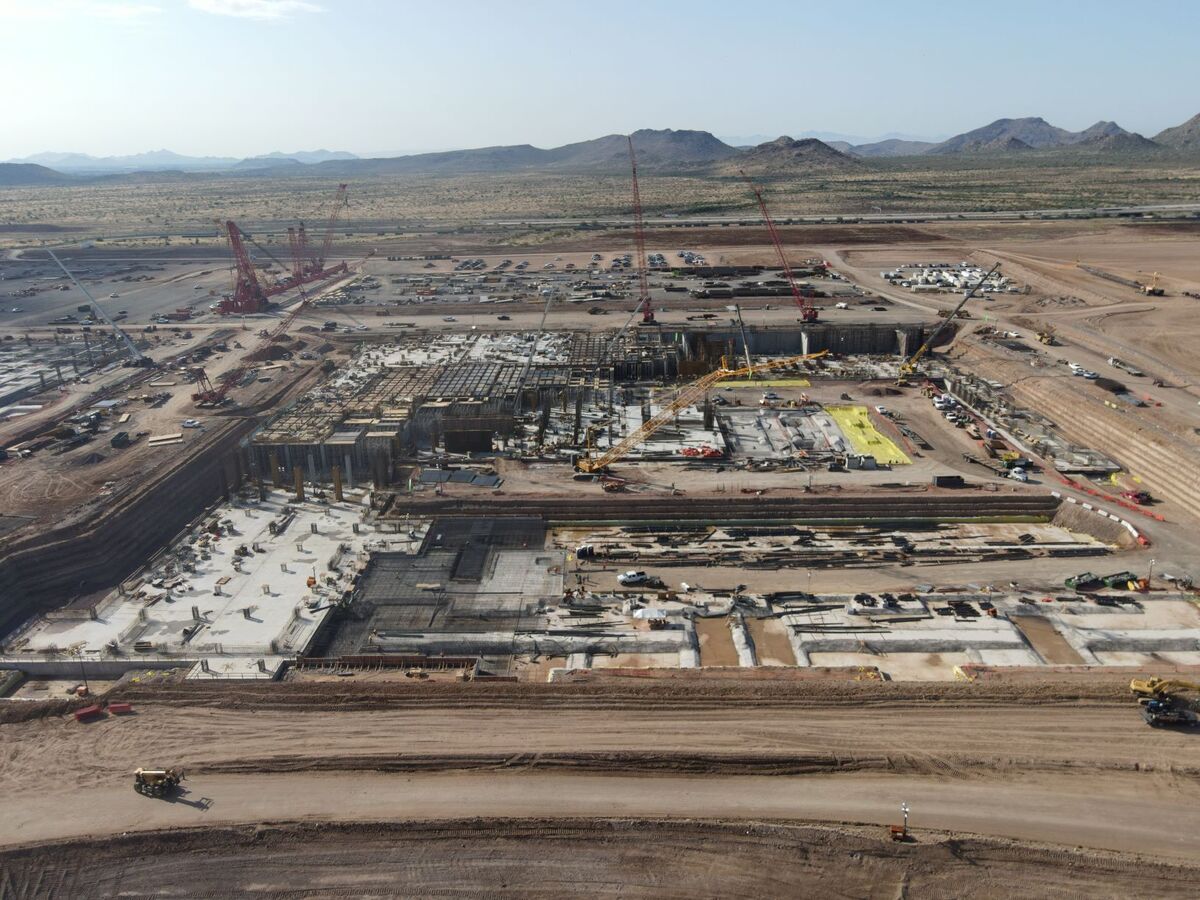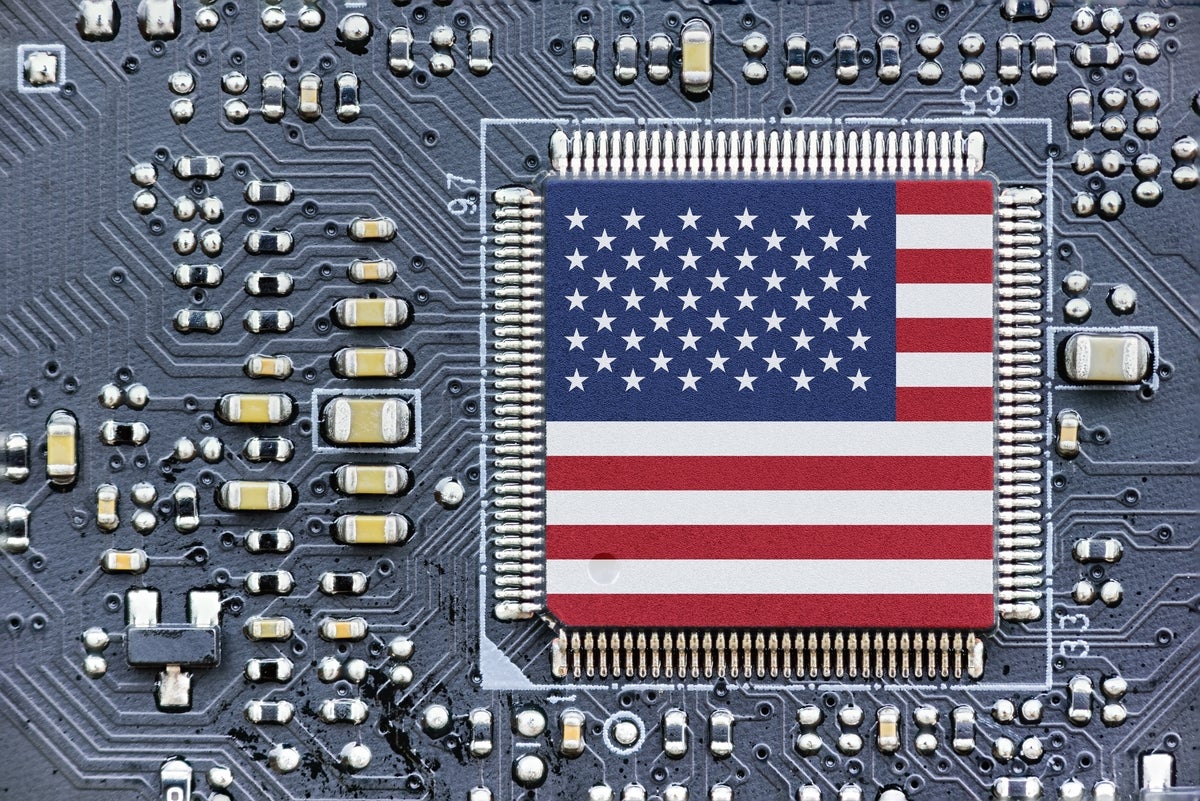Over the past 30 years, the US share of global semiconductor production has fallen from 37% to just 12%, according to White House figures.
Meanwhile, China’s share of chip manufacturing has grown nearly 50% over the past two years and now makes up about 18% of the world’s supply.
In 2021, the decline in domestic chip production was exposed by a worldwide supply-chain crisis that led to calls for reshoring manufacturing to the US. After more than a year of work from the Biden-Harris Administration to respond to acute semiconductor shortages, Congress in August 2022 passed the CHIPS and Science Act (CHIPS Act). The legislation provided the US Department of Commerce (DoC) with $52.7 billion for a suite of programs under the CHIPS for America program to “revitalize” the US position in semiconductor research, development, and manufacturing.
With the CHIPS Act spurring them on, the likes of Intel, Samsung, Micron, TSMC, and Texas Instruments unveiled plans for a number of new US chip fabrication plants. (Qualcomm, in partnership with GlobalFoundries, also said it would invest $4.2 billion to double chip production in its Malta, NY facility.)
 Micron Technologies
Micron Technologies
An artist's rendition of Micron's proposed fabrication plant, to be located in Onondaga County, New York. The plant will be the size of 40 US football fields and is expected to provide close to 50,000 jobs for the region.
The first round of CHIPS Act incentives totaling $39 billion for the construction of large-scale fabrication facilities became available in February. In September, a second funding opportunity for small-scale fabrication projects opened. But to date, none of the money has been distributed, and some fabrication plant projects have run into hurdles.
Editor's note: The same day this story was published, the Department of Commerce announced that the first CHIPS incentive award for $35 million will go to BAE Systems, which makes chips for military aircraft, to increase its production capacity.
At the beginning of 2023, TSMC, the world’s largest chip maker, began construction on a second chip fabrication plant near Phoenix, Ariz. For Biden, TSMC’s two plants represented the flagship of his CHIPS Act incentive program. The TSMC project, however, stalled, and the company announced that it had pushed back its completion date from 2024 to 2025 due to problems finding skilled labor.
While the $52.7 billion provided in incentives to chip manufacturers and researchers is nothing to sneeze at, the Department of Commerce said the real win will come from manufacturers’ own investments in the US economy.
“We’ve seen over $230 billion in private-sector investment in semiconductor manufacturing since the beginning of this administration and over $166 billion since the CHIPS and Science Act was passed,” a DoC official said in response to a Computerworld inquiry.
Micron said it may spend up to $100 billion over the next 20 years on expansions to its US facilities. TSMC had promised to make a $40 billion investment in its US chip production plant. The investment represents the largest ever foreign investment in Arizona and one of the largest in US history.
TSMC manufactures about 50% of the world's semiconductors, which it sells to other companies, such as Apple, AMD, Nvidia, and Qualcomm. In contrast, Samsung and Intel manufacture semiconductors for their own products.
Taiwan and South Korea lead the world in semiconductor manufacturing with about 20% to 21% of the market each, and Japan and the European Union each produce about 9% of the world’s computer chips.
The initial impact of the US CHIPS Act will take anywhere from a couple of years to the end of the decade to be realized, according to Gaurav Gupta, a vice president analyst with Gartner Research. Even with the current reshoring efforts underway, the nation’s share of chip production isn’t likely to grow more than a few percentage points by the end of the decade, according to Gupta.
That’s because semiconductor fabrication plants take from three to five years to build, and then production ramps up after that. But there’s also a technology talent shortage with which manufacturers are contending.
For example, TSMC’s CEO C.C. Wei said the company has already hired close to 1,100 local employees, but the company has stated it will need 4,500 high-tech workers for its two Phoenix fabrication plants.
 TSMC
TSMC
Construction of TSMC's 5nm semiconductor plant in Phoenix, Arizona is currently underway.
TSMC brings many of its employees to Taiwan for extensive hands-on experience in their fab there, “so that they can further their technical skills while being immersed in TSMC operation environment and culture,” Wei said.
“We continue to target volume production of N4 process technology in first half 2025 and are confident that once we begin operations, we will be able to deliver the same level of manufacturing, quality, and reliability in Arizona as from our fabs in Taiwan,” he said.
Micron, which is planning one the nation’s largest semiconductor manufacturing plants in upstate New York, is dealing with the dearth of talent through a U.S.-Japan University Partnership to develop a semiconductor talent pipeline for both countries. The program involves 11 universities in both countries, and three initial courses have been defined and are set to roll out starting in early 2024.
Over the next five years, Micron said it and its development partners will contribute $60 million to the training program with the hope that about 5,000 students will attend the courses in cleanrooms and memory-related collaborative research. The program, in particular, is focused on promoting opportunities for women students, staff, and leaders, according to Micron.
The initial courses will be Introduction to Semiconductors and Memory, Semiconductor Processing, and Semiconductors and Society.
“We are excited to roll out new elements over the next few months, including a special emphasis on programs for women in semiconductors and establishing mentorship programs,” said Scott Gatzemeier, corporate vice president of Front End US Expansion at Micron. “We are also making strides in the areas of research and experiential learning opportunities in cleanrooms and labs and through student exchanges between the two countries.”
Construction on Micron’s new fabrication facility is expected to begin in Spring 2024, and construction will take more than two years to complete. Gatzemeier said the project is currently undergoing “a robust environmental review” and permitting process.
While the challenges to opening new US fabs and research centers in the US are considerable, Gartner’s Gupta said the CHIPS Act has accomplished one thing: it has spurred the world’s largest chip makers to at least announce projects in the US. Last week, for example, Dutch chip equipment maker ASM announced it will invest $324 million in a new Arizona research and development facility. That facility will take about five years to build.
ASM CEO Benjamin Loh said his company is encouraged by the promise of the US CHIPS Act. “We believe that our investments in the US help to strengthen supply chain resilience, drive technological advancement, and qualify us for support under the CHIPS Act,” Loh said.
What is needed now, Gupta noted, is for the DoC to start giving out money to companies whenever possible.
The DoC said the CHIPS ACT has moved extremely fast for a government program. For example, as part of the funding application process, the agency has received over 530 statements of interest from companies in 42 states. The federal agency has also received 120 pre-applications and full applications for the funding opportunities.
The DoC said it is in active dialogues with chip makers and R&D facilities and expects to make major announcements in coming months. “We are actively going through very complex negotiations to make sure we’re doing right by the American taxpayers and that every dollar we spend advances US economic and national security,” the DoC official said.
A White House statement about the initial CHIPS Act award on Dec. 11 called it “the first step of many to come. Over the coming year, the Department of Commerce will award billions more to make more semiconductors in America, invest in research and development capabilities to keep America at the forefront of new technologies, strengthen our national security, and create good-paying jobs.”
The CHIPS Act funding, Micron’s Gatzemeier said, is necessary “to bridge the cost gap between the US and other less expensive regions. We are excited to take part in this once-in-a-generation opportunity to re-establish the US as a leader in the semiconductor memory industry,” he said.






